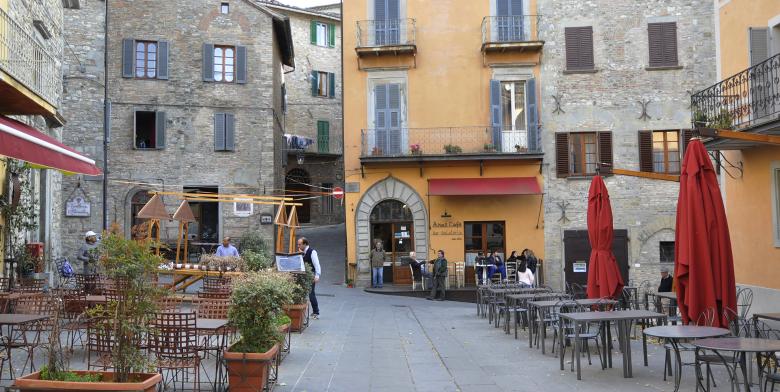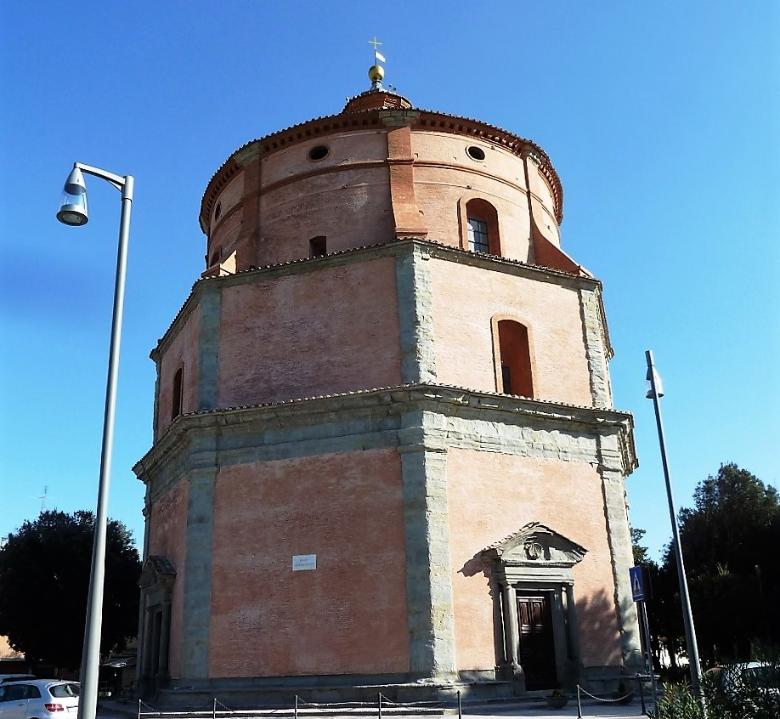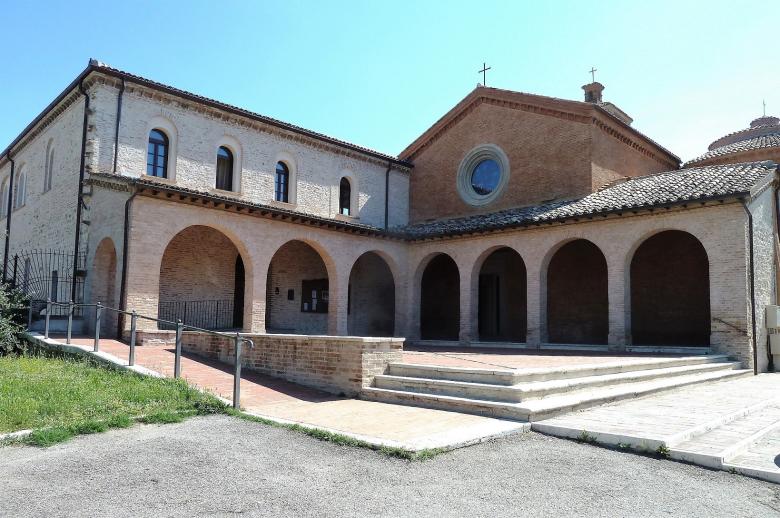Again along the left wall we find the Bancone dei Magistrati (the ‘Magistrates' Pews'), made of carved wood and inlaid with grotesque-like motifs by an anonymous 16th century artist.
The then abbot of the convent, Stefano Cambi, commissioned the Bancone to host the priors who took part in the church's functions.
Along the right-hand side wall we find another altar, probably erected thanks to the contribution of Margherita Malatesta, wife of Carlo Fortebracci. This altar used to feature a banner painted by Bartolomeo Caporali, which is held today in the town's museo comunale.
There are then other damaged votive frescoes, including a Madonna of Mercy, a Saint Catherine of Alexandria probably to be attributed to a Perugian painter from the end of the 14th century, and an episode of the birth of the Virgin Mary, probably part of a larger decorative cycle dedicated to the theme of the life of Mary.
Just before the apse, we find two niches bearing frescoes by an anonymous Umbrian painter from the 15th century, one depicting the Virgin Mary on the Throne with Child and Angels, and the other depicting Saint Anthony of Padua, Saint Bernardino of Siena and the fresco's commissioner.
Lastly, worthy of mention is also the 15th century carved wooden gate by Antonio Bencivenni da Mercatello, native of the Marche, positioned on the church's exterior portico.
As well as offering a refined example of medieval and modern Umbrian art, today San Francesco hosts a number of contemporary art and photography exhibitions, which merge beautifully with the church's environment.
The Pinacoteca (Picture Gallery)
Since 1995, the convent connected to the church hosts the museum of San Francesco, featuring pictures, silverware, and sacred vestments of great artistic value, coming from the church of San Francesco itself and from other churches of the surrounding area.
Amongst the works that one can admire inside the gallery, worthy of mention are Bartolomeo Caporali's gonfalone (‘banner') depicting the Madonna of Mercy, a wooden ensemble dating from the 13th century and depicting the laying of the Cross, which used to be in the church of San Gregorio Magno outside the town walls, and furthermore the Annunciation by Tommaso di Arcangelo, also known as Papacello (who belonged to the school of Luca Signorelli), which was originally made for the church of San Fedele.
There is a finally a small ethnographic section dedicated to East African culture, titled ll Tamburo Parlante (‘The Talking Drum'), curated by the anthropologist Enrico Castello.
MUSEUM OF ST. FRANCIS IN MONTONE
UNIQUE TICKET FOR UMBRIA TERRE E MUSEI
FULL PRICE: € 7
REDUCED A for groups of at least 15 people and affiliated: € 5
REDUCED B for children from 6 to 14 years old: € 2
FREE (children up to 5 years old, disabled with accompanying person, Icom members, qualified tourist guides, accredited journalists)
FREE FOR RESIDENTS: free entrance in the museum of their own city and reduced ticket for the other museums of the circuit.
VALIDITY
General ticket valid for 15 days
Personal ticket (with the person's name on it) valid for 3 months (after registration of the visitor's personal data)
Opening hours:
October to March - on Saturdays and Sundays from 10.30 am to 1 pm and from 3 to 5.30 pm
April to May - on Fridays, Saturdays and Sundays from 10.30 am to 1 pm and from 3.30 to 6 pm
June to September - on Fridays, Saturdays and Sundays from 10.30 a.m. to 1 pm and from 4 to 6.30 pm
closed on 25th December and 1st January.

































